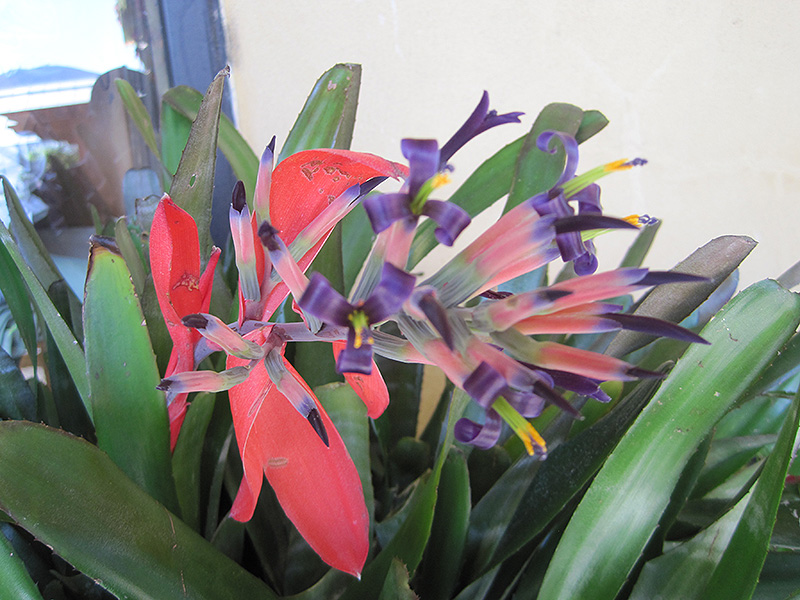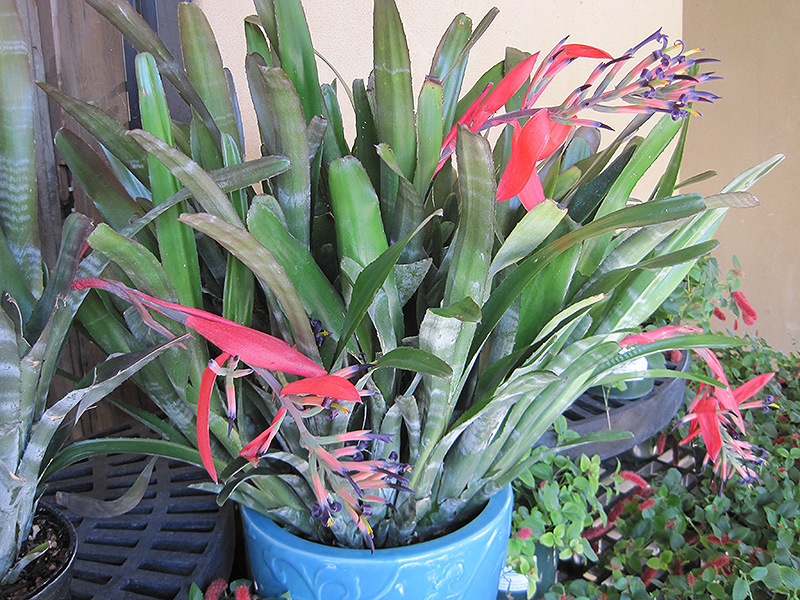>> Home
Height: 18 inches
Spread: 24 inches
Sunlight:
![]()
![]()
Hardiness Zone: 9
Description:
A vigorous selection, producing clumps of rosettes with narrow, bronzy-green leaves that arch gracefully outward; arching stalks of blue and green flowers with pink bracts in spring; a stunning, eye catching accent for rock gardens or containers
Ornamental Features
Queen's Tears features showy spikes of pink star-shaped flowers with royal blue overtones and scarlet bracts rising above the foliage from early to late spring. Its attractive glossy narrow leaves emerge light green in spring, turning forest green in colour with hints of coppery-bronze the rest of the year.
Landscape Attributes
Queen's Tears is an herbaceous evergreen perennial with a shapely form and gracefully arching foliage. Its relatively coarse texture can be used to stand it apart from other garden plants with finer foliage.
This is a relatively low maintenance plant, and should never be pruned except to remove any dieback, as it tends not to take pruning well. It has no significant negative characteristics.
Queen's Tears is recommended for the following landscape applications;
- Accent
- Mass Planting
- Rock/Alpine Gardens
- General Garden Use
- Container Planting
- Hanging Baskets
Planting & Growing
Queen's Tears will grow to be about 18 inches tall at maturity, with a spread of 24 inches. It grows at a medium rate, and under ideal conditions can be expected to live for approximately 10 years. As an evegreen perennial, this plant will typically keep its form and foliage year-round.
This plant does best in partial shade to shade. It prefers dry to average moisture levels with very well-drained soil, and will often die in standing water. It is considered to be drought-tolerant, and thus makes an ideal choice for a low-water garden or xeriscape application. It is not particular as to soil pH, but grows best in sandy soils. It is quite intolerant of urban pollution, therefore inner city or urban streetside plantings are best avoided. This species is not originally from North America. It can be propagated by division.
Queen's Tears is a fine choice for the garden, but it is also a good selection for planting in outdoor containers and hanging baskets. It is often used as a 'filler' in the 'spiller-thriller-filler' container combination, providing a mass of flowers and foliage against which the thriller plants stand out. Note that when growing plants in outdoor containers and baskets, they may require more frequent waterings than they would in the yard or garden. Be aware that in our climate, this plant may be too tender to survive the winter if left outdoors in a container. Contact our experts for more information on how to protect it over the winter months.

